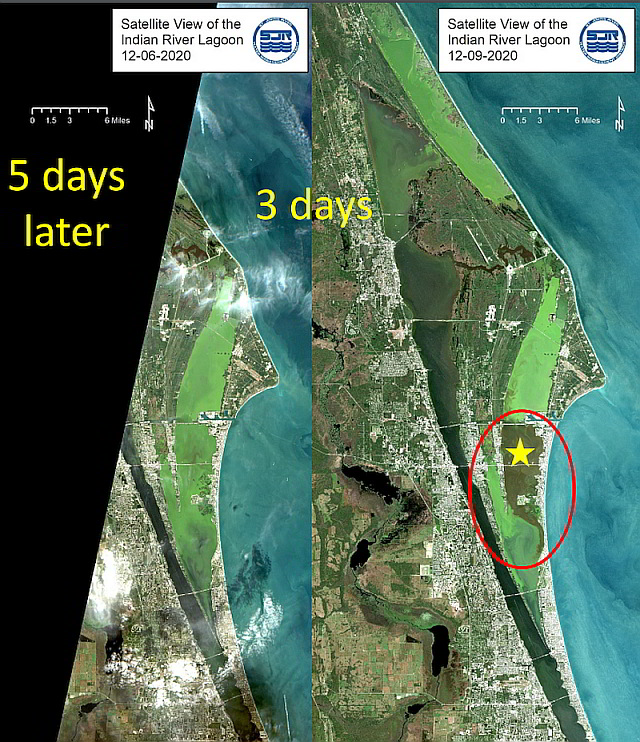IRLNews:Bloom Free But Barren
In spite of Titusville’s 7 million gallon effluent spill, the NIRL has not had a major algae bloom this year. The estuary is bloom free but the bottom is barren of seagrass. The water has been remarkably clear and yet no new seagrass has been reported this year. I wonder what besides algae could be inhibiting our seagrass growth?
Did you know that the Northern Indian River lagoons have a residence (flush) time of over 220 days<ref name=ZarilloFlowStudy /> and glyphosate herbicide may have a 240 day half-life? <ref name=Vereecken2005> What goes in the water stays in the water.
The International Agency for Research on Cancer (IARC) has determined that glyphosate is a probable health hazard to humans.<ref name=IARC /> A recent analysis determined that prolonged exposure to glyphosate may cause kidney and liver damage, and cancerous tumors in experimental animals.<ref name=Portier2020 /> A recent UF Aquatic Animal Health study found that 55.8% of the Florida manatees sampled have glyphosate in their bloodstream.<ref name=UFVetMed> Which of our research groups will be the first to monitor North Indian River Lagoon glyphosate levels?
Martin and Indian River counties have banned the use of glyphosate in order to protect human health and the Indian River Lagoon ecosystem. When will Brevard County follow suit?
The City of Cape Canaveral has banned the municipal use of glyphosate. When will Titusville, Melbourne, and Palm Bay follow their lead?
When will Florida's Melbourne-Tillman Water Control and St. Johns Water Management districts trade herbicides for harvesting in their nutrient loaded drainage canals?
Kennedy Space Center environmental biologists report a 95% loss of seagrass in the north Banana River. When will the IRL’s largest stakeholder, the U.S Federal Government, adopt alternatives to glyphosate on its 140,000 acre property?
Glyphosate is a probable health hazard to the humans that apply it<ref name=IARC>; may remain in the water column for 240 days; and may be partially responsible for the demise of the estuary’s KEYSTONE INDICATOR SPECIES, seagrass.
In other words, the canary in the coal mine has died. Without immediate drastic environmental changes from the city to federal level Brevard County residents may soon witness the death of the Northern Indian and Banana River lagoons.

